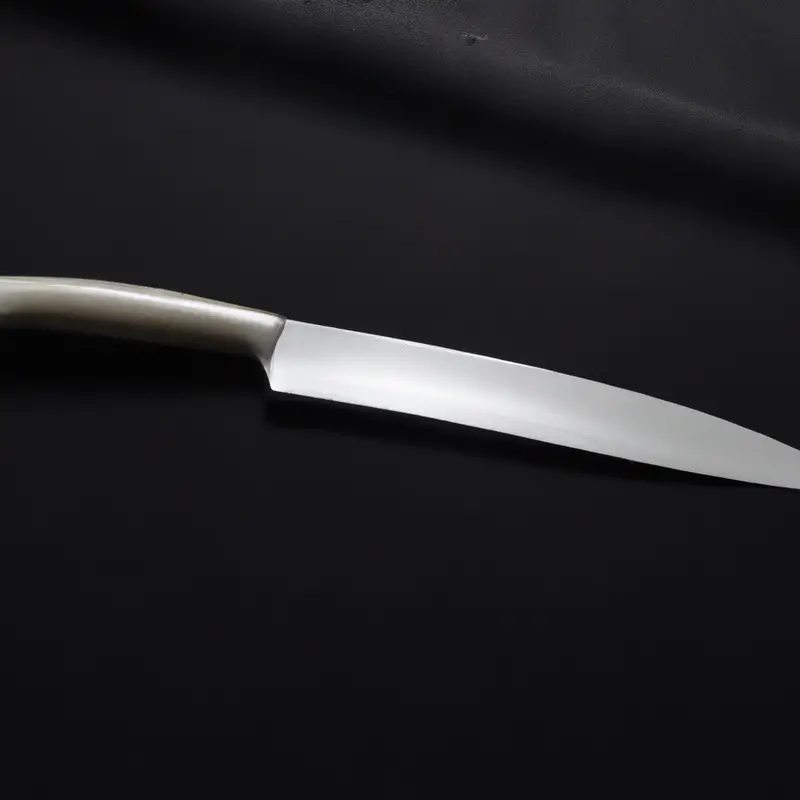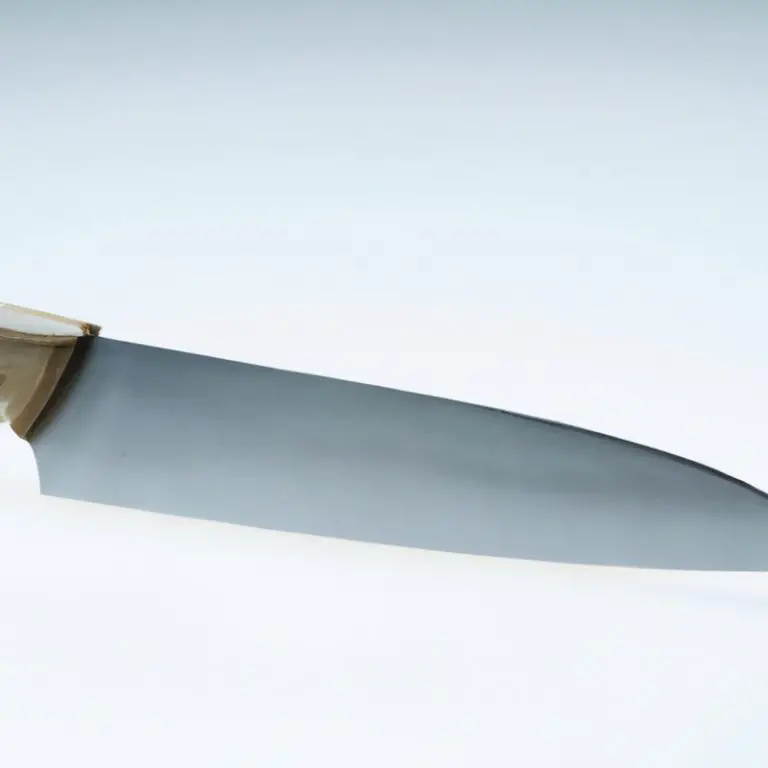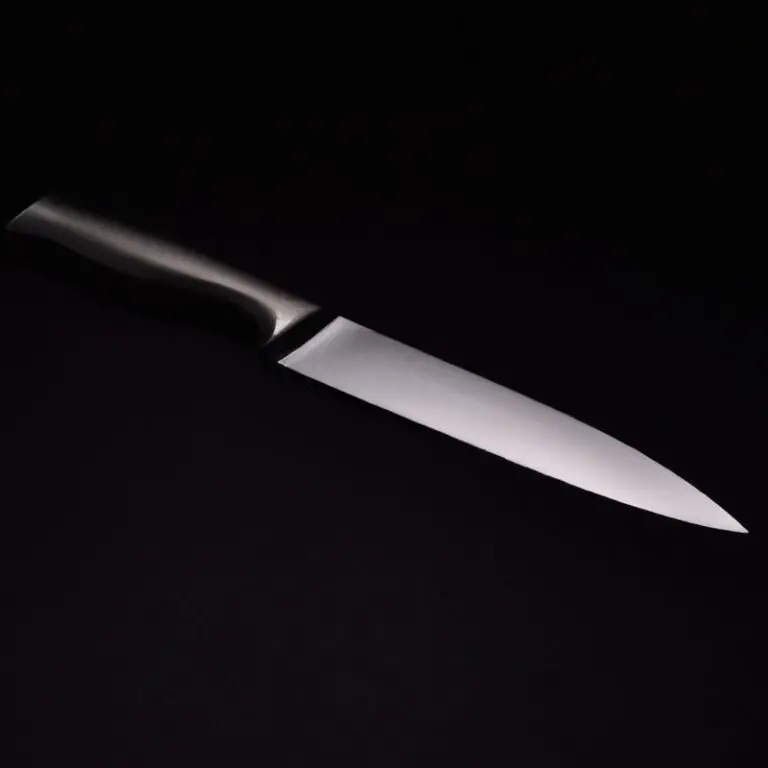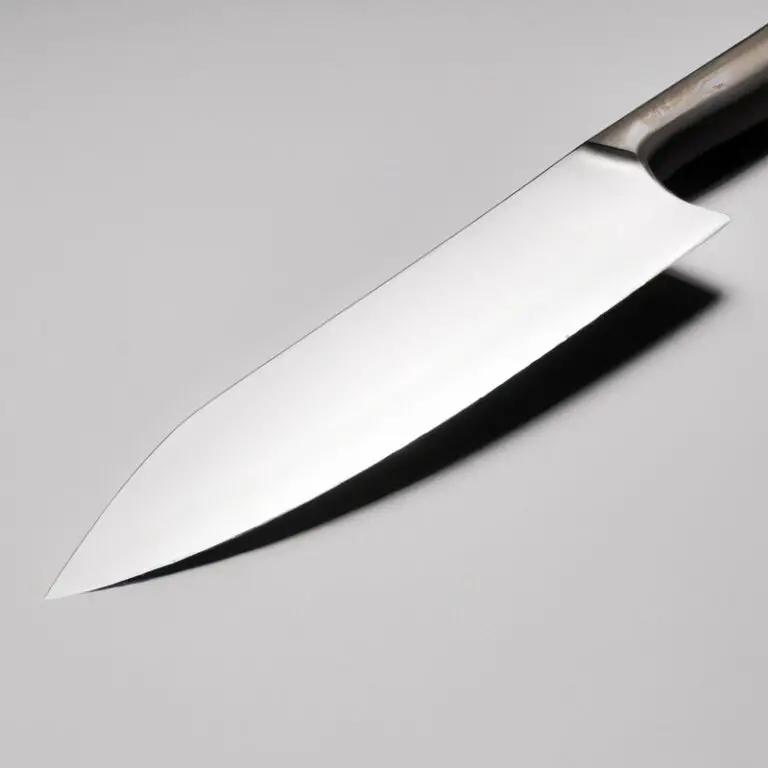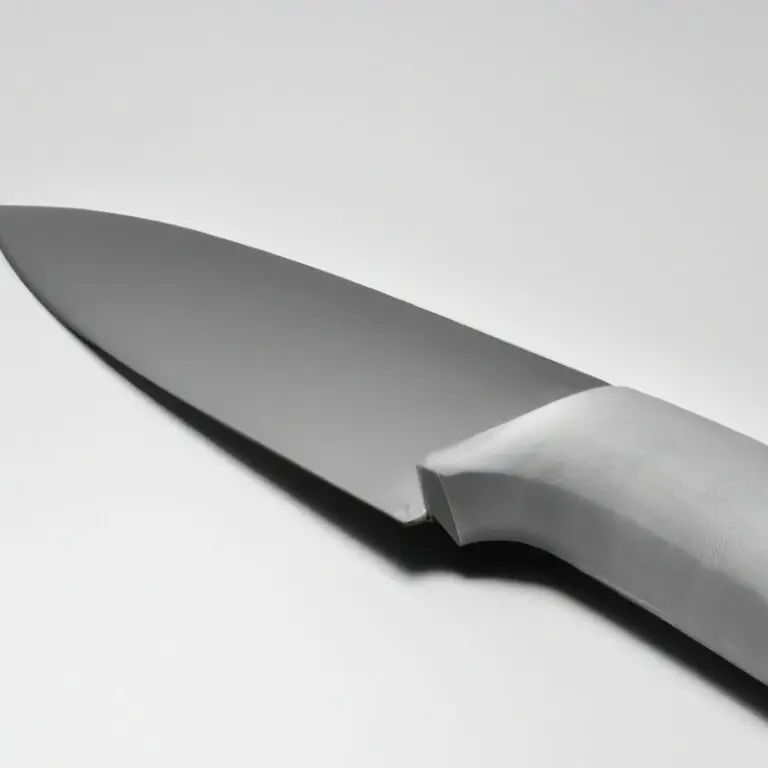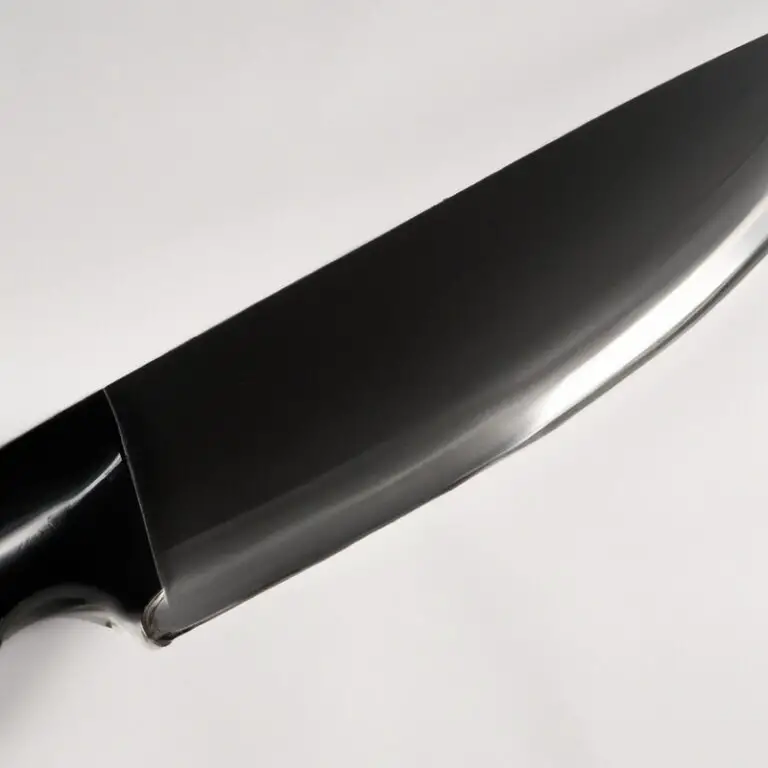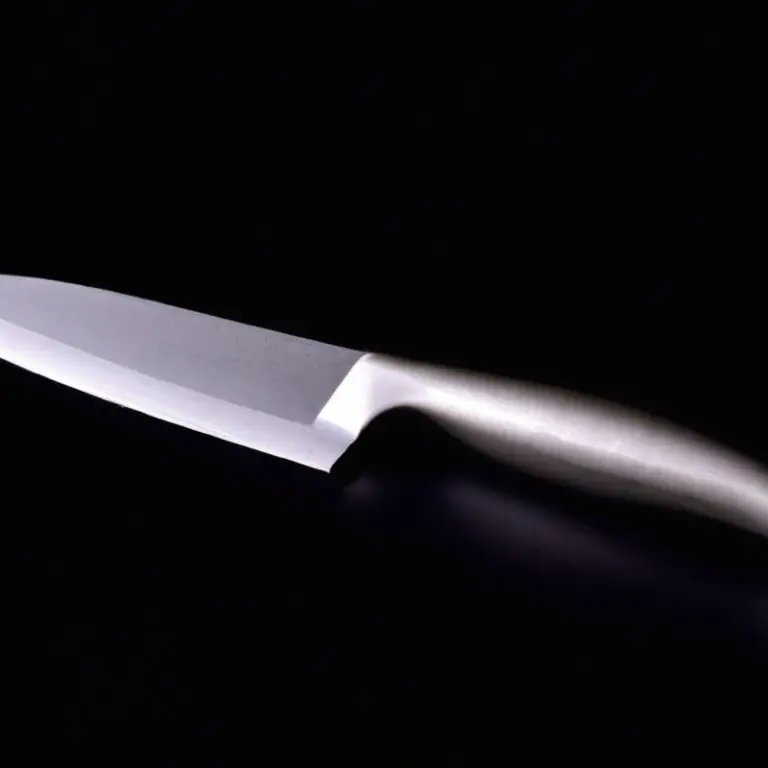What Is a Santoku Knife? Master Your Cuts With This Versatile Blade
Key Takeaways:
- A Santoku knife is a versatile Japanese knife that can be used for a variety of cutting tasks, including chopping, slicing, and dicing.
- Its unique design features a short, wide blade with a slightly curved edge, allowing for precision cuts and comfortable handling.
- The word “Santoku” translates to “three virtues” in English, indicating its ability to handle three types of cuts: chopping, slicing, and dicing.
- When choosing a Santoku knife, look for high-quality materials such as carbon or stainless steel and consider the blade’s length and weight to find one that meets your specific needs.
Have you ever found yourself struggling to choose the right kitchen knife for a specific task? If so, you’re not alone.
Many home chefs face this dilemma on a daily basis.
However, the Santoku knife is one blade that stands out from the rest. Originating in Japan, this multi-functional knife has become increasingly popular worldwide for its versatility and unique features.
In this article, we’ll explore everything there is to know about the Santoku knife, from its anatomy to its different uses and benefits.
Get ready to master the art of slicing and dicing with this exceptional kitchen tool.
| Feature | Description |
|---|---|
| Blade Length | Typically between 5 and 7 inches. |
| Blade Shape | Different from a Western chef’s knife due to its flat edge and shorter, straighter blade; it tapers to a sharp point. |
| Blade Material | High-quality steel that can hold a sharp edge. |
| Uses | Primarily used for slicing, dicing, and chopping vegetables, fruits, and boneless meats. |
| Benefits | Cuts with precision due to its straight edge, provides more knuckle clearance when chopping due to its flat blade shape, and is versatile in the kitchen. |
| Drawbacks | May not be suitable for heavier tasks like cutting through bones or tougher meats. |
The History of the Santoku Knife: Tracing the origins of this versatile kitchen tool
The Santoku Knife originates from Japan and is an essential tool in Japanese cuisine. The word Santoku is Japanese for “three virtues,” which refers to the knife’s three main purposes: slicing, chopping, and dicing.
The exact history of the Santoku Knife is unclear, but it is believed to be a hybrid between a Japanese vegetable knife and a Western chef’s knife.
The Santoku Knife gained popularity in Japan in the 1940s and 1950s and eventually made its way to Western kitchens in the 1980s. Today, it is a popular kitchen tool used by chefs and home cooks worldwide due to its versatility and unique design.
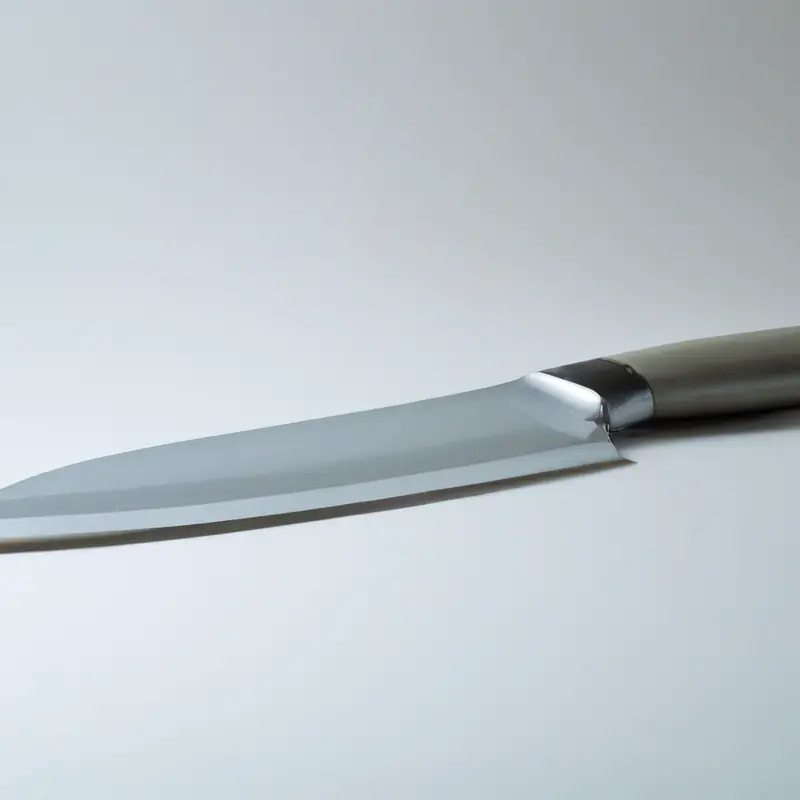
Understanding the Anatomy of a Santoku Knife: Exploring the various parts and their functions
A Santoku knife has a unique design that sets it apart from other types of knives. Its name means ‘three virtues’ in Japanese, which refers to its three main functions: slicing, dicing, and chopping.
Here are the different parts of a Santoku knife and their respective functions:
- Blade: The blade of a Santoku knife is typically between 5 and 8 inches long, with a flatter profile than other kitchen knives. It features a slightly curved edge, which allows for smooth rocking motions when chopping. The blade is also thinner, making it perfect for slicing through delicate foods like fish and vegetables.
- Spine: The spine is the top edge of the blade, opposite the sharp edge. It’s usually thicker than the blade itself and provides balance and stability when cutting.
- Handle: The handle of a Santoku knife can be made from a variety of materials, including wood, plastic, or metal. It’s typically shorter than the blade and features a slight curve that allows for a comfortable, secure grip.
- Bolster: The bolster is the thick metal band that separates the blade from the handle. It provides additional weight and balance and protects your fingers from slipping onto the sharp edge.
- Tang: The tang is the portion of the blade that runs through the handle. A full tang extends the entire length of the handle, providing added strength and durability.
Understanding each of these parts and their functions is essential to using a Santoku knife effectively. By utilizing the unique design of this knife, you can make precise cuts effortlessly and enjoy the versatility that it offers in the kitchen.
Comparing Santoku Knives to other Kitchen Knives: The unique features and benefits that make this knife stand out
Santoku knives possess unique features that make them stand out from other kitchen knives. Unlike traditional Western knives, Santoku knives have a shorter and wider blade, making them ideal for chopping, slicing and dicing.
The blade is also thinner and lighter, allowing for greater control and precision.
Another unique feature of Santoku knives is their granton edge, which is engraved into the blade to create small pockets of air, reducing friction and preventing food from sticking to the blade. This means that you can cut through food more smoothly and efficiently, reducing the effort needed for each cut.
Santoku knives also have a more ergonomic handle, specially designed to provide a comfortable and secure grip.
Some models even have a pronounced bolster, providing better balance and control. Additionally, most Santoku knives are made with high-quality, hardwearing materials, such as Damascus steel, which ensures they are built to last.
Overall, Santoku knives are incredibly versatile kitchen tools that offer a range of unique benefits.
Whether you’re a professional chef or a home cook, a Santoku knife is an ideal addition to your kitchen arsenal.
The Art of Choosing a Santoku Knife: Factors to consider when selecting the right blade for your needs
When it comes to choosing a Santoku knife, it’s essential to consider the following factors:
- Blade Material: High carbon stainless steel is commonly used for its durability and resistance to rust and stains.
- Blade Size: Santoku knives typically range from 5-7 inches. Select the blade length that suits your hand size and cutting requirements.
- Handle Comfort: A comfortable handle will enhance your grip and balance, making it easier to use. Ensure that the handle material is sturdy and non-slip.
- Blade Edge: Straight and granton edges are available. A granton edge reduces friction, making it ideal for slicing and dicing. In comparison, a straight-edged Santoku knife is best for precision cutting.
- Blade Thickness: A thin blade allows for a more delicate and precise cut, while a thicker blade ensures durability and resilience.
- Price: Consider the overall price, warranty, and value for money when making the purchasing decision.
By thinking about these factors, you can select a Santoku knife that is tailored to your specific needs, making your time in the kitchen more efficient, enjoyable, and safe.
Sharpening and Maintaining Your Santoku Knife: Best practices for keeping your knife in excellent condition
To maintain your Santoku knife’s excellent condition, sharpen the blade regularly. A sharp knife makes it easier to chop and prevents accidents caused by slipping.
You can use a sharpening stone or honing steel to sharpen.
To keep the blade from dulling, avoid cutting hard items, such as bones and frozen foods. Also, don’t wash it in the dishwasher or soak it in water.
Instead, wash it gently with soap and warm water, dry it immediately, and store it in a sheath or block.
By following these best practices, your Santoku knife will last for a long time and perform at its best.

The Versatility of a Santoku Knife: The many different uses of this multi-functional kitchen tool
The Santoku knife is known for its versatility, making it an essential tool in any kitchen. Its design allows it to perform various tasks such as slicing, dicing, mincing, chopping, and even carving.
This multi-functional kitchen tool is perfect for preparing vegetables, fruits, meats, and fish.
Its flat edge can scrape food off the cutting board while the curve of the blade makes it easy to use in a rocking motion. The hollow edges of some Santoku knives also reduce friction and prevent food from sticking to the blade, making it easier to use.
In summary, the Santoku knife is a versatile tool that simplifies multiple tasks in the kitchen.
How to Use a Santoku Knife: Step-by-step guide to using a Santoku Knife effectively
To use a Santoku knife effectively, follow these steps:
- Hold the handle with a firm grip and position the blade near the cutting board.
- Use a rocking motion to chop up and down, slicing through the food.
- For precise cuts, use the tip of the blade to cut through ingredients.
- Avoid using a back-and-forth chopping motion, as it can damage both the blade and food.
- Use the broad blade to scoop and transfer the chopped ingredients.
- Always keep your fingers away from the blade to prevent injuries.
Following these simple steps will ensure that you get the most out of your Santoku knife and keep it in pristine condition.
Top Brands and Models of Santoku Knives: Comprehensive review of the best knives available on the market
When it comes to the top brands and models of Santoku knives, there are several options to choose from. Some of the best brands include Shun, Wusthof, Global, and Henckels.
Each of these brands offers high-quality Santoku knives that are durable, sharp, and well-balanced.
Within each brand, there are also several models to choose from. Some of the most popular models include the Shun Classic 7-inch Santoku Knife, the Wusthof Classic 7-inch Santoku Knife, the Global G-48 7-inch Santoku Knife, and the Henckels Twin Pro S 7-inch Santoku Knife.
When selecting a Santoku knife, it’s important to consider the size, weight, and balance of the knife.
You should also look for a knife with a comfortable handle and a blade made from high-quality materials. Overall, the top brands and models of Santoku knives offer excellent performance and are a great addition to any kitchen.
Common Mistakes to Avoid when Handling a Santoku Knife: Tips for ensuring safe and proper use of this blade
When it comes to handling a Santoku knife, there are some common mistakes you should avoid to ensure safe and proper use of this blade. These mistakes include using a dull knife, cutting on an unstable surface, using improper cutting techniques, and neglecting to maintain the knife’s sharpness.
To avoid these mistakes, always ensure your Santoku knife is sharp before use.
Use a proper cutting board, such as wood or plastic, and avoid using glass or marble. Use proper cutting techniques, such as the rocking motion, when chopping or slicing.
And regularly sharpen and maintain the knife to ensure it stays in top condition.
By avoiding these mistakes, you can ensure safe and efficient use of your Santoku knife and enjoy its many benefits in the kitchen.
Santoku Knife Sets and Accessories: Additional items to consider to enhance your Santoku Knife experience
Investing in a good Santoku knife set is a wise decision, but adding a few accessories can enhance your experience further. A sharpening stone or honing rod can keep your knife sharp for longer, while a cutting board with a groove can help prevent messes.
A protective case or sleeve can keep your knife safe during storage or transport.
A designated knife sharpener can also make the sharpening process easier and more efficient. Remember to only use accessories that are suitable for your Santoku Knife and follow the manufacturer’s instructions for best results.
These additional items can make your Santoku knife experience even better.
Final Verdict
The Santoku knife is a versatile and efficient kitchen tool that has been gaining popularity in recent years. With its unique features and benefits, such as its flat edge and ergonomic design, it is no wonder why chefs and home cooks alike have come to love this knife.
When selecting a Santoku, consider factors such as size, blade material, and handle comfort to ensure that you choose a knife that will meet your specific needs.
Remember to always handle the knife with care and to keep it properly maintained for optimal performance. Whether you are slicing vegetables or dicing meat, the Santoku knife is a reliable and practical choice for any kitchen.
Invest in a high-quality model and elevate your cooking experience today.

